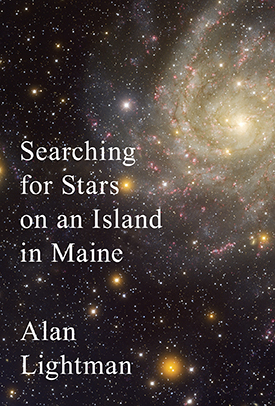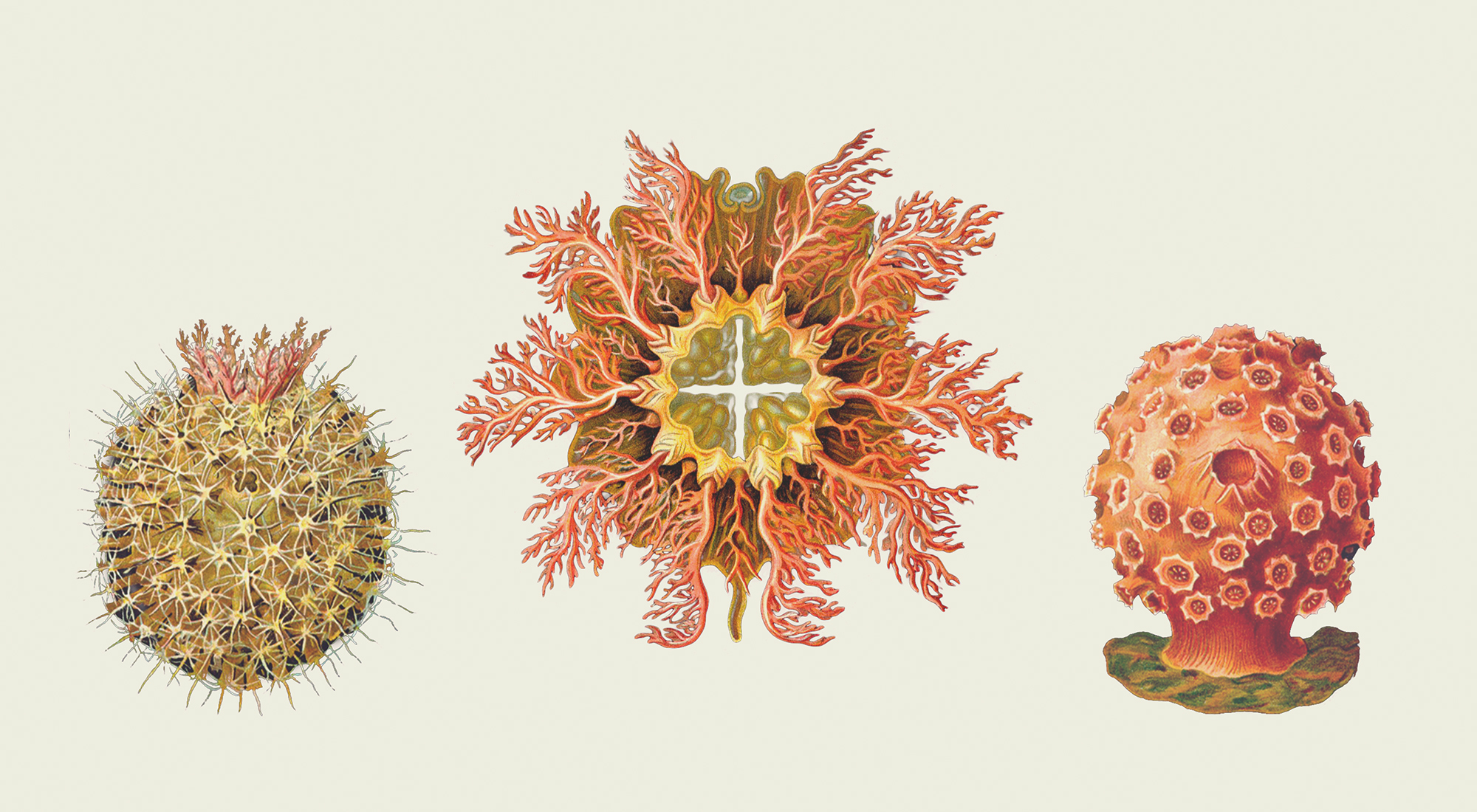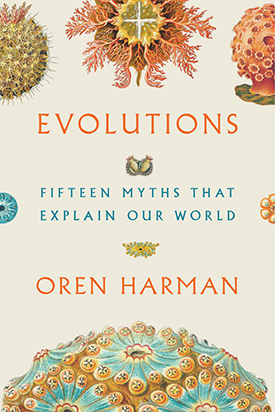Evolutions brings to life the latest scientific thinking on the birth of the universe and the solar system, the journey from a single cell all the way to our human minds. Reawakening our sense of wonder and terror at the world around us and within us, Oren Harman uses modern science to create new and original mythologies. Here are the earth and the moon presenting a cosmological view of motherhood, the loneliness of consciousness emerging from the memory of an octopus, and the birth of language in evolution summoning humankind’s struggle with truth. Science may not solve our existential puzzles, but like the age-old legends, its magical discoveries can help us continue the never-ending search. Karin Altenberg of The Wall Street Journal wrote, “Evolutions is a breathtaking race through the immense scope of time and space that is our universe. The processes of evolution are at times so huge and ungraspable for the mind—so magical—that they can perhaps only be fathomed through the language of myth.” In this conversation, Oren Harman joins Alan Lightman, author of Einstein’s Dreams and Searching for Stars on an Island in Maine, to discuss science, religion, and how we are “captives to history.”
Alan Lightman: Oren, your book Evolutions discusses a number of scientific phenomena and theories and presents them as “myths,” both in the imagery and in the language. How would you distinguish, if at all, between the beliefs of science and the beliefs of religion?
Oren Harman: The word “religion” comes from the Latin ligare which means “to bind.” So there is something very functional about religion, which is a set of practices and beliefs that help bring a group of people together as a community. Mythological thinking, on the other hand, is even more primary: it represents an attempt to make sense of ourselves and of our universe by means of storytelling. What Evolutions tries to juxtapose is not religion and science, necessarily, but rather science and myth. Having said that, what I think distinguishes myth and science most strongly is that science attempts to pose questions that have solutions, whereas the underlying questions of mythology—Where do we come from? Where are we going? What is the meaning of all this?—don’t always have answers, at least not in a philosophical sense. Both are a form of storytelling, but science engages in competitive storytelling and is beholden to a method—the scientific method—which has undergone centuries of impressive refinement. Science and myth stem from the same motivation to satisfy a deep human curiosity for understanding, which is why the fruits of their labors both inspire awe. What separates them is a method, at least in theory.
Science and myth stem from the same motivation to satisfy a deep human curiosity for understanding, which is why the fruits of their labors both inspire awe.
Lightman: I agree with you that science and traditional mythology can both be viewed as storytelling, and both satisfy a deep human need for understanding. And, as you say, the methods are different. Science poses questions that have definite answers, while mythology does not. Here, in my view, is a difference so vast that it strains the characterization of science as storytelling. In order to pose questions that have answers, science has, over the centuries, developed a set of physical and intellectual tools that allow the testing of its theories and predictions. Underneath those tools and the “scientific method” they represent is the belief that there is an external reality out there, independent of our minds, and a reality that is lawful. The ancient Romans believed that thunder was caused by a god named Jupiter, but their inability to consistently predict any of the actions of Jupiter led to the portrait of Jupiter, and the other gods, as whimsical and capricious, certainly not obeying any laws remotely similar to Archimedes’s law of floating bodies or Newton’s theory of gravity.
Even though science and mythology are separated by these big differences, they share the use of metaphor, which your book so beautifully illustrates. In science we of course have mathematical equations, which express a quantitative understanding of various physical phenomena, but when we want to talk about the phenomena, we have to use words and images, and those words and images inevitably must be drawn from our human experience with the world. That human experience has become more and more inadequate as modern science has uncovered wavelengths of light that the eye cannot see and the hazy behavior of subatomic particles and the beginning of the universe itself. The great Danish scientist Niels Bohr put it well when he said of quantum physics: “We find ourselves here on the very path taken by Einstein of adapting our modes of perception borrowed from the sensations to the gradually deepening knowledge of the laws of nature. The hindrances met with on this path originate above all in the fact that . . . every word in the language refers to our ordinary perceptions.”

Considering the difficulties described by Bohr, how do you think that metaphor in science increases our understanding of the physical world, and what demands should we place on such metaphor?
Harman: You make a great point: scientists are human beings just like the rest of us, with their irrationalities, and hidden biases, and human language on their tongues. Galileo famously said that the book of nature is written in the language of mathematics, but to describe what they study—even to themselves—scientists invariably use metaphor. Metaphors, in turn, draw from what our senses know, and what our cultures allow.
Take, for example, the human brain: in the seventeenth century it was imagined as a system of hydraulics, encased in miniature in our skulls. In the eighteenth century it was an intricate clock, in the nineteenth a telegraph switchboard, and a neural network in the twentieth. Today some describe it as a quantum computer, but what’s important to remember is that each of these historical brains was in fact a different entity, of which we asked different questions, constrained by the limits of the metaphor. The metaphors, for their part, drew from our changing cultures and their evolving technologies. Each taught us new things about the brain, but they were discarded when we found a new way to imagine—and therefore describe—what we were hoping to explain. This is what I meant when I said that science and myth differ in method, at least in theory. In practice, our views of reality are shaped by our times. It’s tough to admit that we are captives to history, especially as we seek to describe objective, timeless realities. Like the two little fish in that David Foster Wallace story, we are unable to recognize the waters we swim in. The ancient Romans used the gods to explain life and the universe; we use physical laws and biological processes. But we both could only speak in the terms that our cultural imaginations allow. And even Archimedes gave offerings to Zeus.
In practice, our views of reality are shaped by our times.
You ask what we should demand of our metaphors. I think the only thing we can demand of them, which is to say of ourselves, is that when they begin to go off-key, we be brave enough to replace them and change our tune. The “selfish” gene helped us understand conflicts between mothers and embryos, and altruism between kin. But it also gave agency to an entity which can, in actual fact, do absolutely nothing on its own, and might well have been called the “cooperative” gene instead. Maybe that just wasn’t as sexy. I have a strong feeling that two hundred years from now, or perhaps half that, the “gene” itself will have gone the way of the heavenly epicycles and the aether. Our growing understanding of molecular and systems biology is teaching us that there may be no reason to privilege one actor over all the others, in what is an intricate concert of interacting parts. Maybe it won’t make sense to speak of genes when we find a better way to describe the great polyphony.
Lightman: Your book is also an unusual blend of science and humanism, written in the form of a narrative poem. I am reminded a bit of Calvino’s Cosmicomics, or Primo Levi’s The Periodic Table, although you have more science in your book. What led you to write the book in this way? Were you drawing on any particular literary traditions or inspirations?
Harman: Thank you, Alan. You are extremely generous. Calvino and Levi were indeed inspirations to me—how they married a beautiful literary sensibility to cosmology and chemistry, respectively, in ways that made palpable their great love for science. Having been a late bloomer who found it almost impossible to choose between the lab and the arts—in my case between a career as a biologist or as a writer—they (and also Douglas Adams and Lewis Thomas and Charles Darwin himself) represented whole human beings who didn’t succumb to the usual forced distinctions, as if one had to be one or the other, a scientist or humanist. Have you ever seen the beautiful collections of butterflies of Nabokov at the Museum of Comparative Zoology in Cambridge? His insights into human psychology were matched and reflected in the careful observation and preparations of the tiny winged creatures. To me humanism and science each seemed so much more enhanced by the insistence that they need not be separated. One of the greatest inspirations to me in this vein was your book Einstein’s Dreams, maybe my all-time favorite book about science. How you imagined yourself into the dreams of the young patent clerk, Einstein, night-walking the streets of Berne during the crucial months of his annus mirabilis, imagining what the world would be like if time flowed backwards, or was circular, was fitful or discontinuous. What a gorgeous way to write about science! It taught me more than a thousand books with footnotes ever could. That’s how I wanted to write.
Lightman: I am pleased to know that my Einstein’s Dreams was part of your inspiration for Evolutions. As I am sure you would agree, one of the greatest pleasures of writing a book, or doing anything creative, is the possibility of inspiring others with your work. It is interesting that you suggest that Einstein’s Dreams is a book about science. I never regarded it that way, either in the conception or in the writing of it. In fact, I consciously resisted the urge to make each of the dream’s worlds logically consistent or consonant with science, as I felt that kind of texture would have weighed down the book. Only one of the many dream worlds coincides with Einstein’s actual theory of relativity. All the others are complete fancy. In one sense, the book is about science—in suggesting the way that the scientific imagination works. But when writing a novel or a movie or a play that incorporates science or the scientific mentality, I think that one must be very careful not to be didactic. If at any moment the reader or viewer feels that she or he is getting a lesson in physics or biology, the piece is murdered as a work of art. Any novel or movie or play about science, I think, must succeed first as an artistic piece and secondarily as a possible vehicle for information. Tom Stoppard’s Arcadia and Michael Frayn’s Copenhagen succeed well in this regard. If your interest is in pedagogy, a nonfiction book is a much better vehicle. I think that your Evolutions lies happily in the terrain between art and science.
Any novel or movie or play about science, I think, must succeed first as an artistic piece and secondarily as a possible vehicle for information.
Oren Harman’s book The Price of Altruism won the Los Angeles Times Book Prize in Science and Technology and was a New York Times Notable Book of the Year. He is a renowned professor of the history of science and the Chair of the Program in Science Technology and Society at Bar Ilan University.
Alan Lightman worked for many years as a theoretical physicist and is the author of six novels, including the international best seller Einstein’s Dreams, as well as The Diagnosis, a finalist for the National Book Award. His work has appeared in The Atlantic, Granta, Harper’s Magazine, The New Yorker, and The New York Review of Books, among other publications. He is currently a professor at MIT and lives in the Boston area. Searching for Stars on an Island in Maine was published by Pantheon Books in March.

